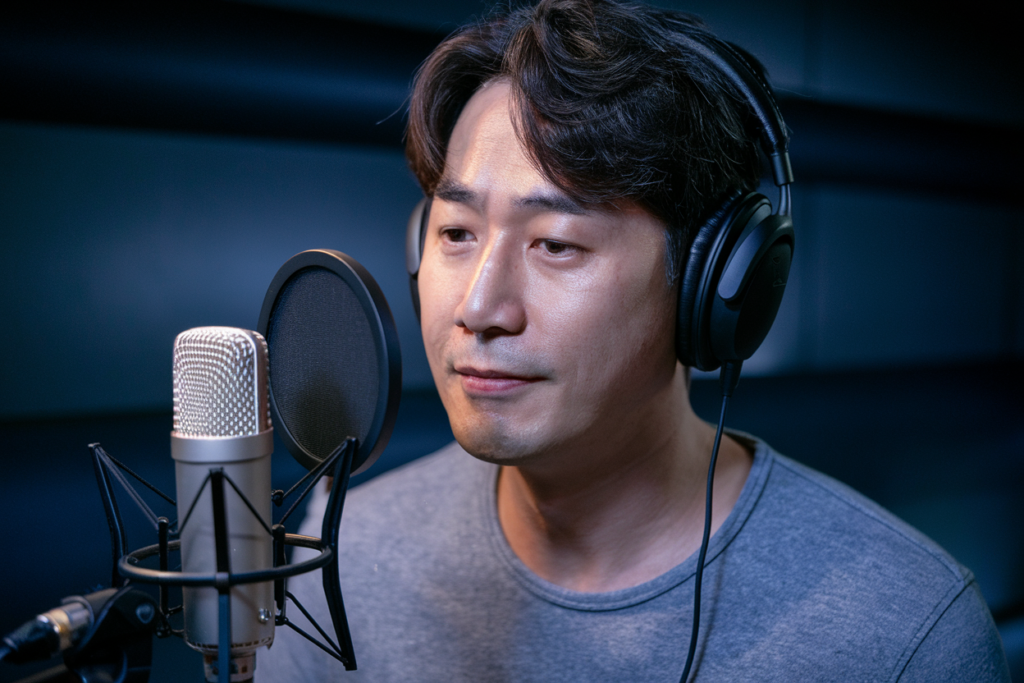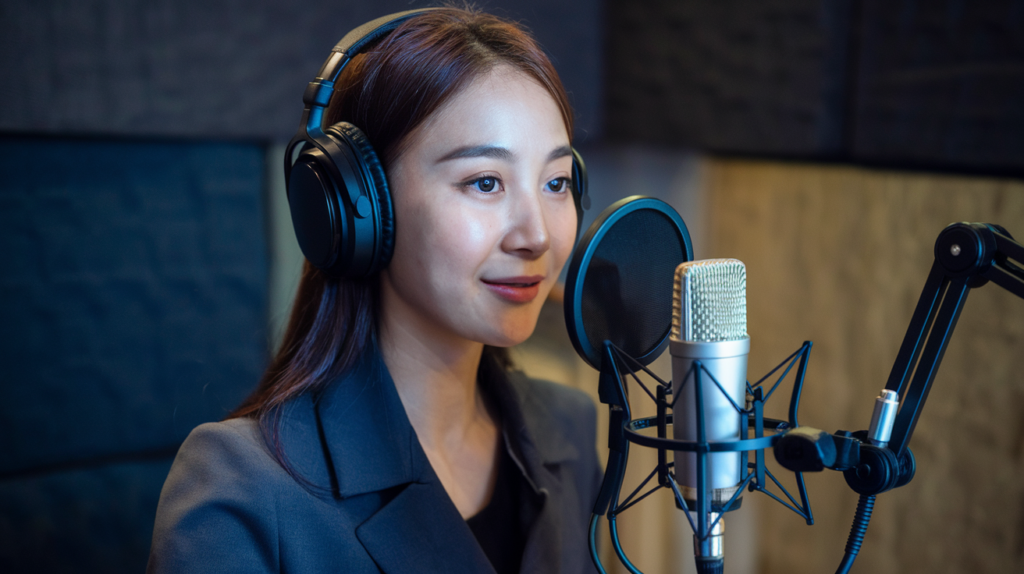Key Takeaways
- Artistry and Technical Skill: Korean dubbing combines creative voice acting with precise technical skills to synchronize dialogue with character lip movements, enhancing storytelling.
- Emotional Connection: Effective lip sync techniques foster a strong emotional bond between audiences and characters, making the viewing experience more immersive.
- Phonetic Matching and Timing Adjustments: Successful dubbing relies on phonetic matching of dialogues and careful timing adjustments to ensure natural flows that resonate with viewers.
- Cultural Authenticity: Dubbing not only involves language translation but also capturing cultural nuances, allowing for authentic representations that appeal to both local and international audiences.
- Challenges Faced by Voice Actors: Navigating language subtleties and technical constraints is essential for voice actors in achieving seamless performances in Korean dubbing.
- Innovations in the Industry: Advancements in technology, training methods, collaborative approaches, cultural sensitivity, and audience engagement are continuously shaping the future of Korean dubbing.
Ever wondered how Korean dubbing manages to look so seamless? The magic lies in the art of lip sync techniques that bring characters to life, making you feel every emotion they express. With the rise of K-dramas and films worldwide, mastering these techniques isn’t just for professionals; it’s a skill anyone can learn.
Overview of Korean Dubbing
Korean dubbing combines artistry and technical skill to create engaging voiceovers that resonate with audiences. The process involves matching the spoken dialogue to the lip movements of characters, ensuring a natural flow that enhances storytelling. This requires skilled voice actors who can convey emotions effectively while synchronizing their performance with the original footage.
Voice talent plays a crucial role in this process. Voice artists need to understand character nuances and adapt their performances accordingly. They often study the original material closely, capturing not just dialogue but also intonation and emotion. This attention to detail helps maintain the integrity of the characters, allowing viewers to connect deeply with them.
The techniques used in Korean dubbing include precise timing and rhythm adjustments. Voice over actors often record multiple takes, experimenting with different vocal styles until they find one that fits perfectly. This dedication ensures that every scene feels authentic, drawing viewers into the narrative seamlessly.
As K-dramas and films gain international popularity, mastering these dubbing techniques becomes vital for anyone interested in entering this field. Whether you’re an aspiring voice actor or simply curious about the industry, understanding these fundamentals will enhance your appreciation for Korean media and its captivating storytelling methods.
Importance of Lip Sync Techniques
Lip sync techniques play a crucial role in creating an immersive experience for audiences. Accurate synchronization between dialogue and lip movements fosters emotional connections with characters, enhancing viewer engagement. As Korean dramas and films continue to rise in global popularity, mastering these techniques becomes essential for voice actors and artists alike.
Impact on Audience Engagement
Effective lip syncing captures attention and keeps viewers invested in the story. When voiceovers align perfectly with on-screen actions, it creates a seamless flow that feels natural. Audiences are more likely to connect emotionally with characters when their expressions match the delivered lines. This connection encourages loyalty to the content and can lead to increased viewership.
Relationship with Cultural Authenticity
Lip sync techniques also uphold cultural authenticity in Korean media. Voice talent must not only match dialogue but also convey the nuances of character emotions rooted in cultural contexts. Skilled voice artists understand how specific phrases or expressions resonate within Korean culture, ensuring that translations maintain original meanings while fitting seamlessly into animated or live-action scenes. By prioritizing these elements, productions honor their heritage while appealing to international audiences who seek genuine experiences through dubbing processes.
Methods of Korean Dubbing Lip Sync
Korean dubbing relies on specific techniques to ensure dialogue matches character movements seamlessly. Understanding these methods enhances the overall viewing experience.
Phonetic Matching
Phonetic matching involves aligning spoken words with the lip movements of characters on screen. Voice actors analyze original dialogues and adapt their performances to match phonetic sounds closely. This process requires an in-depth understanding of both languages, as even slight differences can disrupt synchronization. Effective phonetic matching not only enhances visual engagement but also maintains the emotional tone of scenes, allowing audiences to connect with characters authentically.
Timing Adjustments
Timing adjustments play a crucial role in achieving accurate lip sync. Voice artists often manipulate their delivery speed to align perfectly with scene pacing. Each line may require several takes, allowing voice talent to find the ideal rhythm that complements the original footage. By fine-tuning timing, performers enhance comedic beats or dramatic moments, ensuring that every expression and emotion resonates with viewers. This attention to detail creates a more immersive experience, making it easier for audiences to become absorbed in the story being told.
Challenges in Korean Dubbing Lip Sync
Korean dubbing lip sync presents unique challenges that voice actors must navigate to create authentic and engaging performances.
Language Nuances
Language nuances play a significant role in the dubbing process. Korean expressions often involve subtleties that don’t directly translate into other languages. Voice actors must capture the emotional weight of lines while ensuring that their delivery aligns with character lip movements. This requires an understanding of cultural context, idiomatic phrases, and tone variations. For example, honoring the original intent behind dialogues enhances viewer connection, but it complicates timing and phonetic matching.
Technical Constraints
Technical constraints add another layer of complexity to Korean dubbing lip sync. Synchronizing dialogue with visual cues demands precise timing from voice artists. Variations in speech speed can affect overall synchronization; therefore, adjusting delivery is essential for achieving a natural flow. Additionally, equipment limitations may hinder sound quality or clarity during recordings, impacting the final product’s effectiveness. Voice talent often faces these hurdles while striving to deliver polished performances that resonate with audiences worldwide.
Voice actors excel when they embrace these challenges, mastering techniques like phonetic matching and rhythm adjustments to elevate their craft in Korean dubbing.
Innovations in Korean Dubbing
Innovations in Korean dubbing continue to shape the industry, enhancing how voice actors connect with audiences. Modern techniques push the boundaries of traditional methods, allowing for more authentic and engaging performances.
Advanced Technology
Advanced technology plays a crucial role in the evolution of dubbing. High-quality recording equipment captures every nuance of a voice artist’s performance, ensuring clarity and emotional depth. Software tools now allow for real-time adjustments during sessions, helping voice talents synchronize their lines more effectively with character movements.
Innovative Training Methods
Innovative training methods equip aspiring voice actors with essential skills. Workshops focus on lip sync techniques, teaching participants how to analyze scripts for emotive delivery while maintaining precise timing. Some programs emphasize phonetic matching strategies, allowing artists to align spoken words seamlessly with visual cues.
Collaborative Approaches
Collaborative approaches among creative teams lead to exceptional results in Korean dubbing projects. Writers and directors work closely with voice talent throughout production phases, fostering open communication about character intentions and emotional arcs. This collaboration ensures that every line delivered by a voice actor resonates authentically within the story’s context.
Cultural Sensitivity
Cultural sensitivity remains at the forefront of innovations in dubbing practices. Understanding cultural nuances enhances performances by aligning dialogue delivery with regional expressions and idiomatic phrases. Voice artists who immerse themselves in cultural contexts create experiences that feel genuine for both local and international audiences.
Audience Engagement Techniques
Audience engagement techniques are becoming increasingly sophisticated within the industry. Voiceover professionals tap into audience feedback to refine their craft continuously, tailoring performances based on viewer preferences or trends observed through analytics. This responsive approach allows performers to remain relevant while enhancing viewer enjoyment.
By embracing these advancements in technology, training, collaboration, cultural understanding, and audience engagement strategies—Korean dubbing continues evolving into an art form that captivates global audiences through richly layered storytelling experiences.
Conclusion
Mastering Korean dubbing lip sync techniques is essential for creating immersive experiences that resonate with audiences. By focusing on phonetic matching and precise timing, voice actors can deliver performances that authentically reflect character emotions while syncing flawlessly with visuals.
The unique challenges of language nuances and technical constraints only enhance the artistry involved in dubbing. As technology advances and training methods improve, aspiring voice talent can harness these skills to elevate their craft further.
This ongoing evolution not only enriches storytelling but also fosters deeper connections between viewers and characters. Embracing these techniques ensures that Korean media continues to captivate global audiences with its unique charm and emotional depth.
Frequently Asked Questions
What is the significance of lip sync techniques in Korean dubbing?
Lip sync techniques are crucial in Korean dubbing as they ensure that spoken dialogue matches the characters’ lip movements. This synchronization enhances emotional connections between viewers and characters, making the storytelling more engaging.
How do voice actors achieve accurate lip sync?
Voice actors achieve accurate lip sync through phonetic matching and timing adjustments. They analyze original dialogues, adapt their performances, and often record multiple takes to align speech delivery with character movements and scene pacing.
Why is cultural sensitivity important in dubbing?
Cultural sensitivity is essential in dubbing because it helps convey regional expressions and nuances accurately. Understanding cultural context allows voice actors to deliver authentic performances that resonate with both local and international audiences.
What challenges do voice actors face in Korean dubbing?
Voice actors face challenges such as language nuances that can’t be directly translated, precise timing for synchronization, and variations in speech speed. These factors require a deep understanding of cultural idioms to create believable performances.
How has technology impacted Korean dubbing?
Technology has significantly improved Korean dubbing by enabling high-quality recordings and real-time adjustments during sessions. This advancement enhances the emotional depth of performances, allowing for a more immersive viewing experience.
Are lip sync techniques accessible to everyone?
Yes, mastering lip sync techniques is becoming increasingly accessible due to innovative training methods available for aspiring voice actors. Resources are now available that teach essential skills like phonetic matching and rhythm adjustments for effective dubbing.







